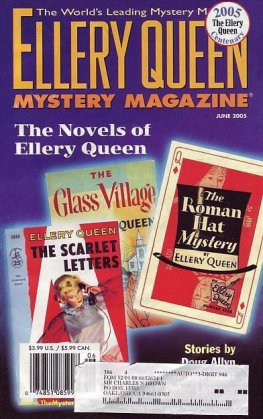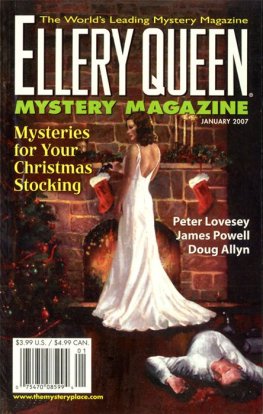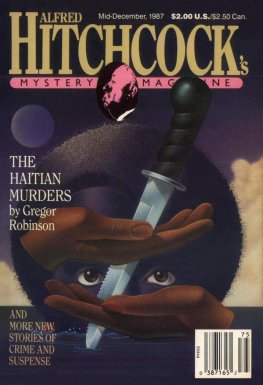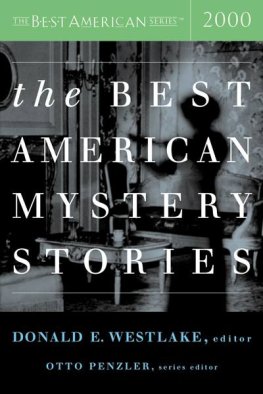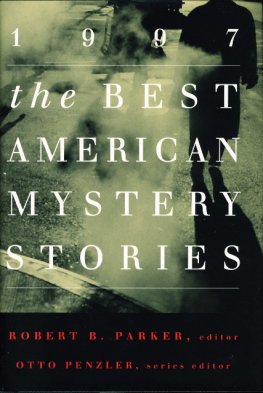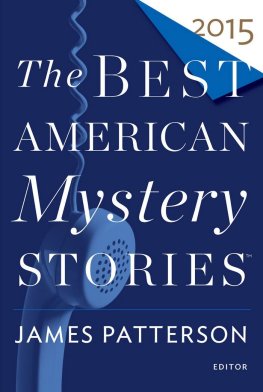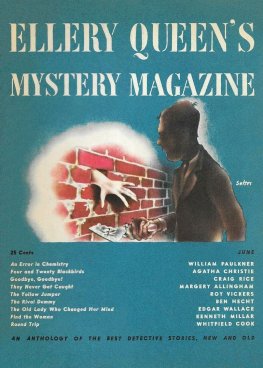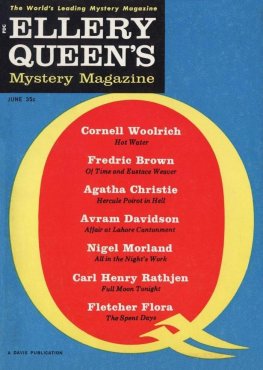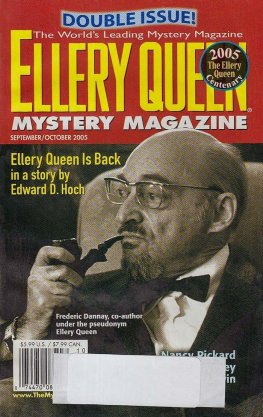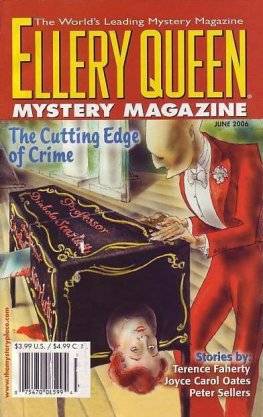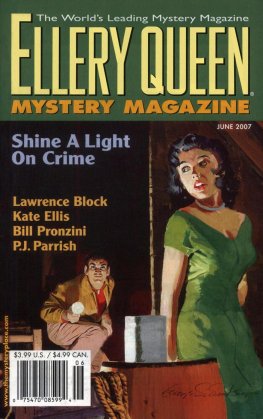Doug Allyn - Ellery Queen’s Mystery Magazine. Vol. 125, No. 6. Whole No. 766, June 2005
Here you can read online Doug Allyn - Ellery Queen’s Mystery Magazine. Vol. 125, No. 6. Whole No. 766, June 2005 full text of the book (entire story) in english for free. Download pdf and epub, get meaning, cover and reviews about this ebook. City: New York, year: 2005, publisher: Dell Magazines, genre: Detective and thriller. Description of the work, (preface) as well as reviews are available. Best literature library LitArk.com created for fans of good reading and offers a wide selection of genres:
Romance novel
Science fiction
Adventure
Detective
Science
History
Home and family
Prose
Art
Politics
Computer
Non-fiction
Religion
Business
Children
Humor
Choose a favorite category and find really read worthwhile books. Enjoy immersion in the world of imagination, feel the emotions of the characters or learn something new for yourself, make an fascinating discovery.
- Book:Ellery Queen’s Mystery Magazine. Vol. 125, No. 6. Whole No. 766, June 2005
- Author:
- Publisher:Dell Magazines
- Genre:
- Year:2005
- City:New York
- ISBN:1054-8122
- Rating:5 / 5
- Favourites:Add to favourites
- Your mark:
- 100
- 1
- 2
- 3
- 4
- 5
Ellery Queen’s Mystery Magazine. Vol. 125, No. 6. Whole No. 766, June 2005: summary, description and annotation
We offer to read an annotation, description, summary or preface (depends on what the author of the book "Ellery Queen’s Mystery Magazine. Vol. 125, No. 6. Whole No. 766, June 2005" wrote himself). If you haven't found the necessary information about the book — write in the comments, we will try to find it.
Ellery Queen’s Mystery Magazine. Vol. 125, No. 6. Whole No. 766, June 2005 — read online for free the complete book (whole text) full work
Below is the text of the book, divided by pages. System saving the place of the last page read, allows you to conveniently read the book "Ellery Queen’s Mystery Magazine. Vol. 125, No. 6. Whole No. 766, June 2005" online for free, without having to search again every time where you left off. Put a bookmark, and you can go to the page where you finished reading at any time.
Font size:
Interval:
Bookmark:
Ellery Queens Mystery Magazine. Vol. 125, No. 6. Whole No. 766, June 2005
The Novels of Ellery Queen
by Edward D. Hoch
Anthony Boucher once wrote, Ellery Queen is the American detective story, and certainly no other American writer was so active, for such a long period, in so many different aspects of mystery writing. From 1929 to 1982 the name was in the forefront of mystery writing, editing, and scholarship. Queen not only produced some of the best detective novels of the so-called Golden Age (roughly 1920 to 1940) but also continued to publish important and sometimes classic novels during the decades that followed.
Frederic Dannay and Manfred B. Lees first joint effort under the Ellery Queen name was The Roman Hat Mystery, published on August 15, 1929. It was an immediate success, transporting readers to the glamorous Broadway theater world where a clever blackmailer named Monte Field is poisoned while seated in the last row of the orchestra at the Roman Theatre. Inspector Richard Queen is in charge of the case, and his son Ellery joins him at the scene of the crime. Virtually the first words out of Ellerys mouth are, You just lured me away from a perfect book-lovers paradise, thereby establishing his character as surely as Rex Stout established Nero Wolfes character five years later with his first words in print: Wheres the beer?
The investigation moves from the Roman Theatre to Monte Fields bedroom, where late in the book a secret compartment full of top hats is discovered. Some seventy-five pages before the finish, Queen stopped the action with the first of his famous challenges to the reader. All the clues have been given and Ellery knows the identity of the killer. Does the reader? The action resumes and moves on to a capture just as the killer is about to strike again. The final chapter, a letter from his father to Ellery, outlines the clues that helped them arrive at the surprising solution.
Though few critics today would list The Roman Hat Mystery among the ten best Queen novels, that is only because it has been eclipsed by far better adventures in the decades that followed. It remains an amazing achievement for a first novel, and was to set the pattern for the first nine Queen novels. All would have similar titles using a nationality, a common noun, and the word Mystery. Most would feature a Challenge to the Reader, and most would have lengthy, complex solutions revealing the killer to be the least suspected person.
Queens second novel, The French Powder Mystery, was published just a year after the first. It contained many of the same elements an unfamiliar setting (this time a department store), a large cast of characters, some complex but logical deductions, and the usual Challenge to the Reader. But this time the authors added something more. The solution is so cleverly constructed that the killers name is withheld until the final two words of the book. It was a feat that could be topped only by Queen himself in a later book (which shall be nameless here), in which the killers name appears only as the first words of the novel and its last words but is found nowhere else in the book!
The Dutch Shoe Mystery, about murder in the Dutch Memorial Hospital, was published in 1931. Its plot, involving a killer disguised as a doctor who strangles a patient awaiting emergency surgery, is almost as good as the first two Queens but the best was yet to come. In 1932 they published four of their best early novels in a single year.
For the first of these they decided to adopt a second pseudonym and acquire another publisher. They became Barnaby Ross, chronicling the cases solved by Drury Lane, a retired Shakespearean actor forced to give up his career because of deafness. The first Lane novel, The Tragedy of X, was Dannay and Lees best book to date a baffling mystery that cleverly uses varying modes of transportation for its settings. Thus the first murder, by nicotine poisoning, occurs on a crowded Manhattan streetcar. It is followed by murder on the Weehawken ferry to New Jersey, with the murderer finally unmasked aboard a train in New Jersey. The Tragedy of X has been called by Francis M. Nevins, Jr. (Royal Bloodline) a book of staggering complexity, stunning ingenuity, and dazzling fairness to the reader. As such, it was the first truly classic mystery to come from the pens of Dannay and Lee.
It was followed within three months by an equally complex and rewarding novel under the Queen name, The Greek Coffin Mystery. The longest and best of the early novels about Ellery, it involves the death of a wealthy old man, and the strangled body of a second man found in the coffin with him. The complicated plot features some dazzling detective work involving a typewriter, and a least-suspected person that should surprise even the most astute Queen reader. The book marks Queens first use of multiple solutions. In fact, four solutions are given during the course of the novel, with the true one the most astounding and satisfying of all.
Their third book in 1932 was another Drury Lane adventure under the Barnaby Ross name. The Tragedy of Y is a favorite Queen novel among Japanese readers, and American critics differ only on whether it or X is the best of Lanes cases. Its portrait of the doomed Hatter family is superb, and the solution once again breaks totally new ground. Its least-suspected person has been used since then by other writers, but this was its first use in a detective novel.
The year ended with the publication of The Egyptian Cross Mystery, Ellerys fifth case and yet another dazzling performance. The crucifixion of decapitated bodies made for some bloody murder scenes, but there was method in the killers seeming madness and one could forgive the gore in the face of some fine detective work and another surprising solution.
In 1933 the third of Drury Lanes adventures was published. If The Tragedy of Z marked a falling-off from the classic stature of the first two books, it was still a very good mystery. Patience Thumm, a police inspectors daughter, narrates the story and though parts of the narration are awkward, one still wishes she could have developed into a series character on her own. The murders here take place near a state prison in upstate New York, and the book features two memorable scenes in the prisons execution chamber. Drury Lane arrives at the killers surprising identity by establishing four traits or qualifications which he must have, based upon the clues, and then ruling out all but one of the possible suspects. It was a clever technique that Queen would use again. Another plot element, mysterious packages delivered to the victims before their murders, hinting at vengeance from the past, would reappear in Queens The Origin of Evil, eighteen years later.
The first Queen adventure of 1933 was The American Gun Mystery, in which the murder occurs during a rodeo at a huge Manhattan sports arena. The plot solution involved a clever reworking of a least-suspected person the authors had used before. By this time it was clear to Dannay and Lee that the Queen books were outselling the Ross ones, and Drury Lanes Last Case put an end to that series, much to the dismay of mystery critics and readers.
The Siamese Twin Mystery, the next Queen novel, was something of a departure. There was a smaller cast a household of people trapped with Ellery and his father on a mountaintop threatened by a forest fire. The solution when it came was without the usual Challenge to the Reader, and seemed far simpler than what had gone before. Still, on rereading the book one appreciates its clever use of dying messages involving playing cards.
The Chinese Orange Mystery, published in 1934, is still remembered fondly by many readers for its bizarre crime scene. The year also saw publication of
Font size:
Interval:
Bookmark:
Similar books «Ellery Queen’s Mystery Magazine. Vol. 125, No. 6. Whole No. 766, June 2005»
Look at similar books to Ellery Queen’s Mystery Magazine. Vol. 125, No. 6. Whole No. 766, June 2005. We have selected literature similar in name and meaning in the hope of providing readers with more options to find new, interesting, not yet read works.
Discussion, reviews of the book Ellery Queen’s Mystery Magazine. Vol. 125, No. 6. Whole No. 766, June 2005 and just readers' own opinions. Leave your comments, write what you think about the work, its meaning or the main characters. Specify what exactly you liked and what you didn't like, and why you think so.

